News and Flight Heritage
Thermotive in the Air, in Space, and on the Ground
At Thermotive, we are honored to collaborate with national and international aerospace companies, labs, space agencies, and academic and research institutions to develop innovative thermal management solutions for aerospace applications. Our hardware is on the ground, in the air, and in space. In addition, our patent-pending Pyrovo™ Pyrolytic Graphite Film Thermal Straps now have flight heritage and are recognized as the best thermal straps in the world.
Along with many others, Thermotive has delivered hardware to the projects/customers listed below:
| AIR | SPACE & PLANETARY EXPLORATION | GROUND |
|---|---|---|
Other/Undisclosed Applications:
|
|
|
THERMOTIVE IN SPACE
Lightning Imaging Sensor (LIS) on the International Space Station
Thermotive designed, fabricated, and tested custom thermal hardware for the STP-H5 Lightning Imaging Sensor (LIS). The LIS, designed by the The University of Alabama in Huntsville, Global Hydrology Resource Center DAAC, and NASA Marshall Space Flight Center, launched on Feb 19th, 2017 aboard the SpaceX CRS-10 (SPX-10) on the Falcon 9 rocket and was mounted to the International Space Station (ISS). We are thrilled to have our hardware on such a valuable scientific instrument and honored to ride on the International Space Station.
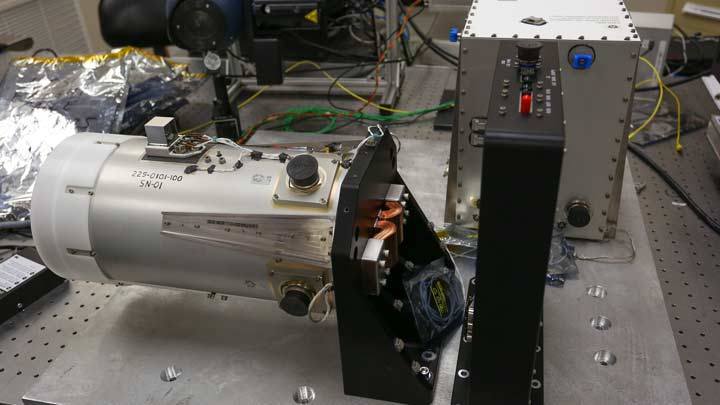 |
||
| The LIS is visible in this photograph of the ISS. The STP-H5 (Space Test Program-Houston 5) payload package in located in the upper left, in front of a solar panel. The LIS is at the bottom of the STP-H5, pointing toward Earth. Credit: NASA |
Thermotive’s copper and aluminum hardware is visible on the back of the camera of the completed instrument. It stabilizes the temperature of the optical detector. Credit: UAH |
The LIS at NASA Johnson Space Center. Credit: NASA |
For more information, visit http://thunder.nsstc.nasa.gov/data/query/mission.png.
Thermotive hardware is on NASA’s Deep Space Atomic Clock project! In February 2017, it was joined to the Surrey Orbital Test Bed spacecraft that will take into orbit in late 2017.
Developed at NASA’s Jet Propulsion Lab for NASA’s Space Technology Mission Directorate, the DSAC project will fly and validate a an ultra-precise, mercury-ion atomic clock that is orders of magnitude more stable than today’s best navigation clock, as well as smaller and lighter than any other atomic clock flown in space, forever changing the way we conduct deep-space navigation. The clock will make use of GPS signals to demonstrate precision orbit determination and confirm its performance, promising new savings on mission operations costs, delivering more science data and enabling further development of deep-space autonomous radio navigation.
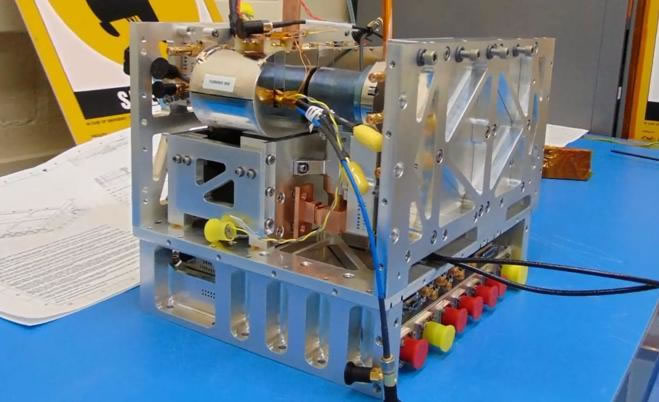 |
||
| Tom Cwik, head of JPL's Space Technology Program (left) and Allen Farrington, JPL Deep Space Atomic Clock Project Manager, view the integrated Atomic Clock Payload on Surrey Satellite US’s Orbital Test Bed Spacecraft. Credit: Surrey Satellite Technology |
The Atomic Clock, GPS Receiver, and Ultra-Stable Oscillator which make up the Deep Space Atomic Clock Payload, following integration into the middle bay of Surrey Satellite US’s Orbital Test Bed Spacecraft. Credit: Surrey Satellite Technology |
Thermotive hardware is visible on the DSAC. Credit: NASA |
For more information about the DSAC, visit https://www.nasa.gov/mission_pages/tdm/clock/index.html.
ASTERIA Wins Small Satellite Mission of the Year Award!
Thermotive delivered custom hardware for ASTERIA (Arcsecond Space Telescope Enabling Research in Astrophysics), a 6U CubeSat that will operate in low-Earth orbit. ASTERIA’s goal is to advance the state of the art in CubeSat capabilities for astrophysical measurements by achieving arcsecond-level line of sight pointing error and highly stable focal plane temperature control. Precision thermal control is achieved by isolating the payload from the spacecraft bus, passively cooling the detector, and using trim heaters to perform small temperature corrections over the course of an observation. Thermotive’s hardware supports this thermal control system. A collaboration between JPL and MIT, ASTERIA is scheduled to launch and deploy this summer. It measures roughly 10x20x30 cm and weighs 12 kg.
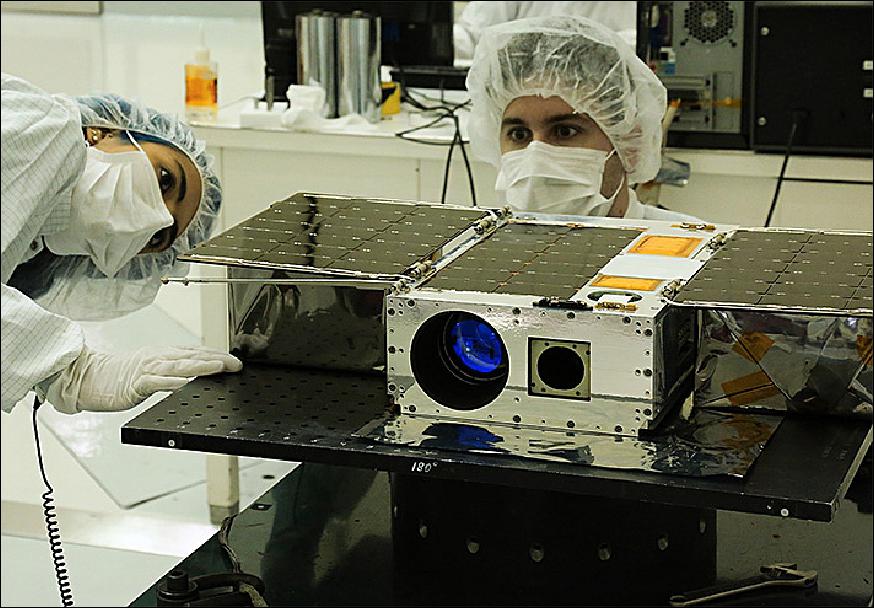
Electrical Test Engineer Esha Murty (left) and Integration and Test Lead Cody Colley (right) prepare the ASTERIA spacecraft for mass properties measurements in April 2017 prior to spacecraft delivery (image credit: NASA/JPL)
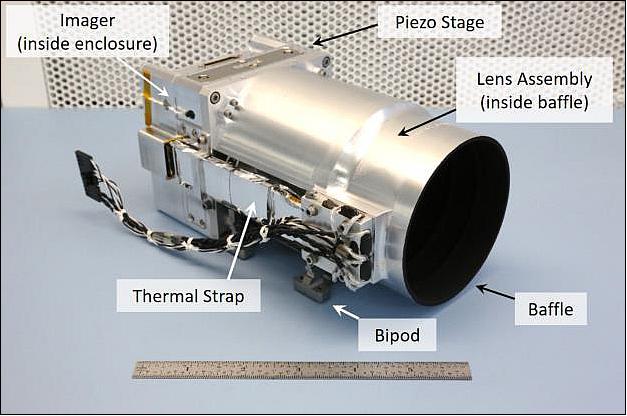
ASTERIA flight model: OTA (Optical Telescope Assembly), image credit: ASTERIA Team)
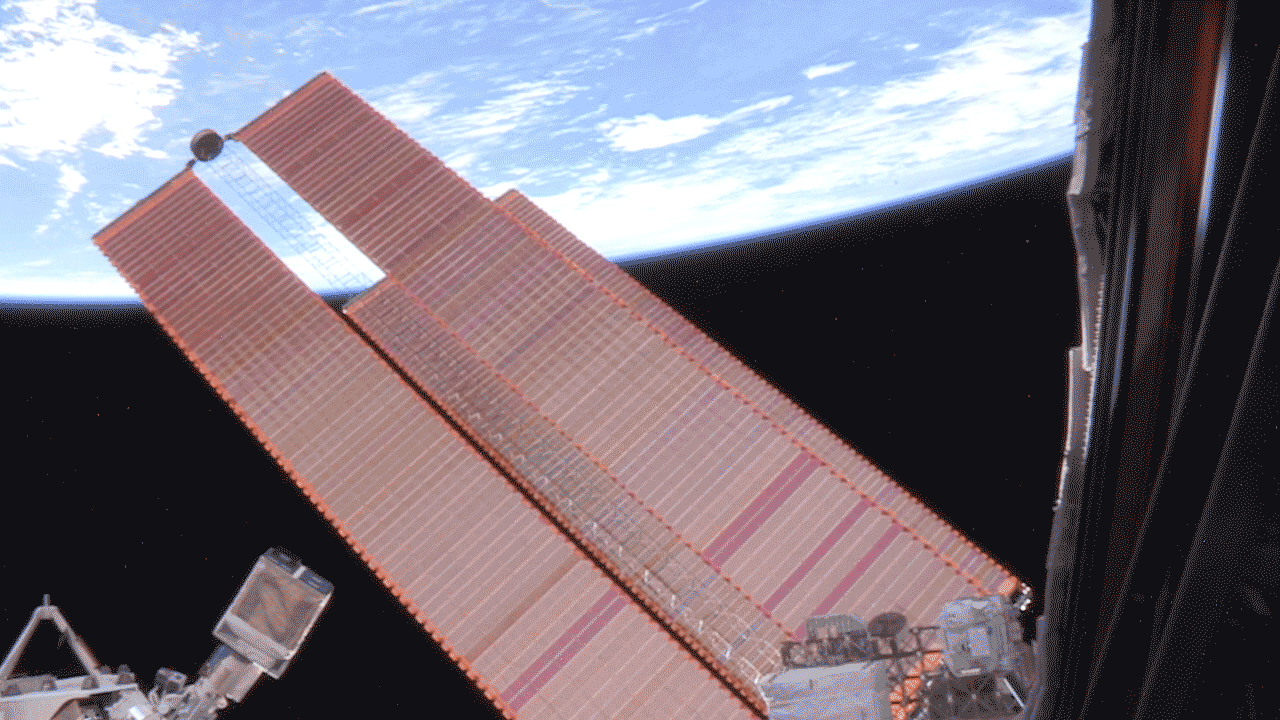
ASTERIA deployed from the ISS on November 21 (UTC), 2017 (image credit: NASA)
To learn more about JPL's ASTERIA CubeSat, visit https://www.jpl.nasa.gov/cubesat/missions/asteria.php.
https://directory.eoportal.org/web/eoportal/satellite-missions/a/asteria
Orbiting Carbon Observatory 3 (OCO-3) NASA-JPL
In late 2016, Thermotive's Pyrovo™ pyrolytic graphite film (Pyrovo™ PGF or PPGF) thermal strap replaced a heat pipe in an electronics cooling application. PPGF straps are high conductivity, flexible, light weight, compact and freeze tolerant. In fact, they have about 30% higher conductivity near 200K (-73°C) as compared to room temperature.
The Orbiting Carbon Observatory 3, or OCO-3, is a future space instrument designed to investigate important questions about the distribution of carbon dioxide on Earth as it relates to growing urban populations and changing patterns of fossil fuel combustion. It will dock to the International Space Station; launch date TBD.
To learn more about JPL's OCO-3, visit https://www.jpl.nasa.gov/missions/orbiting-carbon-observatory-3-oco-3/.
High Profile Earth-Orbiting Military Satellites
Thermotive recently delivered thermal control hardware used in advanced optics, vibration isolation, and thermal managment of satellite control equipment on three high profile, Earth-orbiting military satellites. The nature of the projects and our non-disclosure agreements do not allow us to dislose details.
Thermotive has provided aluminum, copper and Pyrovo™ PGF thermals straps for several private companies that are building the most advanced commercial rockets ever.
In late 2016 and 2017, Thermotive delivered Pyrovo™ PGF thermals straps to several NASA Mars 2020 rover engineering teams. The straps did not make it aboard the M2020 flight rover due to a tight rover test schedule and final design revisions. Still we are honored, but not surprised, by the selection of Pyrovo™ PGF thermal straps for this inspiring application.
Based on the combination of conductivity, flexibility, cleanliness, and mass, these are the best in the world. Over short heat paths, they are now replacing heat pipes in cooling sensitive electronics and optics because of their reliability, wide operating range, flexibility, and freeze tolerance.
JPL- Cold Atom Laboratory (CAL)
Thermotive's thermal straps are used on the Cold Atom Lab!
NASA’s Cold Atom Lab will produce clouds of ultra-cold atoms aboard the International Space Station to perform quantum physics experiments in microgravity. Atoms are chilled to about one 10 billionth of a degree above Absolute Zero, or about 10 billion times colder than the average temperature of deep space. At those temperatures, atoms behave in strange ways, allowing scientists to investigate the fundamental nature of matter. For more info about CAL, visit https://coldatomlab.jpl.nasa.gov/
The clouds of ultra-cold atoms CAL produces are called Bose-Einstein Condensates (BECs), a bizarre state of matter in which atoms exhibit quantum behavior at macroscopic a scale you can see. BECs make it possible for researchers to probe the fundamental nature of matter. Hundreds of BEC experiments exist on Earth, but on the International Space Station, free from the pull of gravity, scientists will be able to observe BECs for much longer than what is possible on Earth, and reach even colder temperatures than what is typically achieved on the ground. The Cold Atom Lab will move scientists another step closer to solving some of the biggest mysteries in the universe, such as understanding the nature of dark matter and dark energy and solving the disagreement between quantum mechanics and the theory of gravity.
Research done on CAL can also have practical applications, such as making improvements to atomic clock technologies, which are used in spacecraft navigation, as well as the GPS satellites that provide navigation information to devices like smartphones. CAL research could also lead to improvements to quantum sensors used for remote sensing on spacecraft. These sensors can be used for a variety of applications, including monitoring Earth’s changing climate and remotely studying the internal makeup of planets and asteroids.
https://www.youtube.com/watch?v=z85AA2tF9f8
THERMOTIVE IN THE AIR
Multiangle SpectroPolarimetric Imager (MSPI), a high altitude airborne scientific instrument, on the NASA ER-2
Thermotive hardware is on NASA's ER-2 High-Altitude Airborne Science Aircraft. Our hardware helps maintain tight thermal control on the Multiangle SpectroPolarimetric Image (MSPI) camera. The optical detectors on this camera are very sensitive to temperature changes. The ER-2 can fly more than twice as high as commercial aircraft (over 60,000 feet) where the air temperature is -60C (-75F), so high that that the pilot must wear a pressurized suit. The ER-2 is NASA's scientific version of the U2 spy plane! We are honored to have collaborated with the AirMSPI team at NASA Jet Propulsion Laboratory.
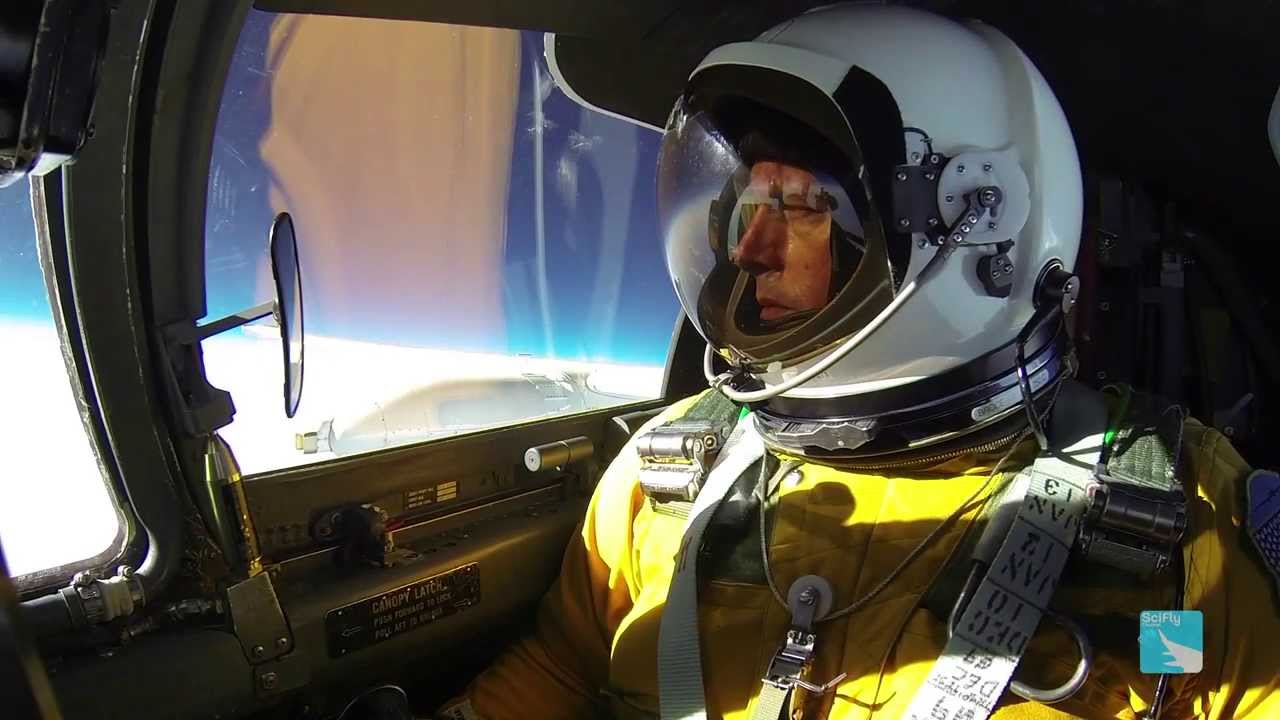 |
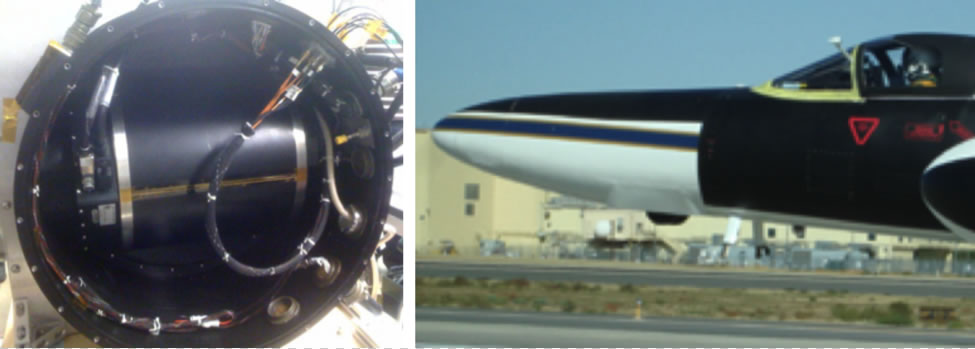 |
| Pilot in an ER-2 wearing a pressurized suit. | Left: Pressure vessel and cylindrical drum housing the AirMSPI camera. Right: AirMSPI installed in the nose of the ER-2. The instrument is visible protruding below the fuselage. Credit: NASA-JPL |
For more information about AirMSPI, visit http://airbornescience.jpl.nasa.gov/instruments/airmspi.
F-35
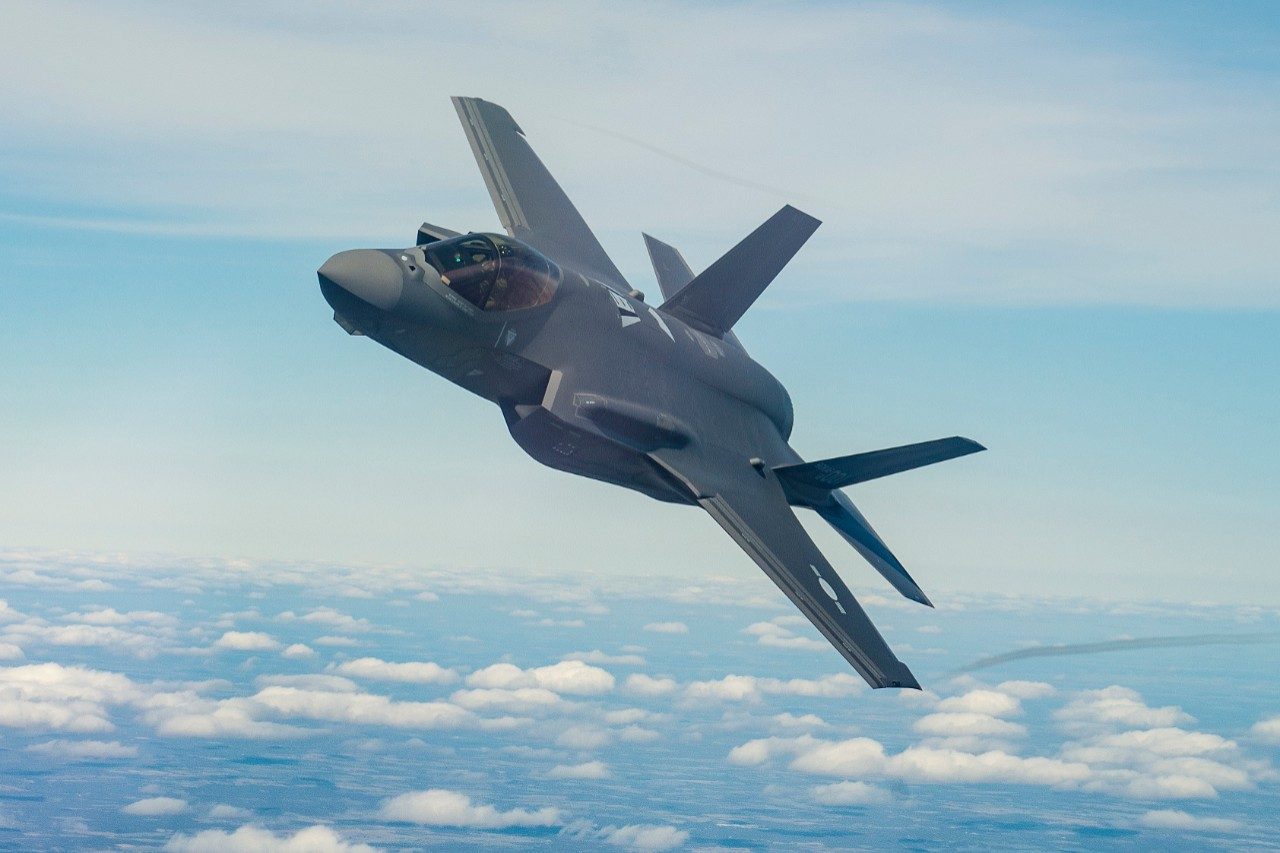
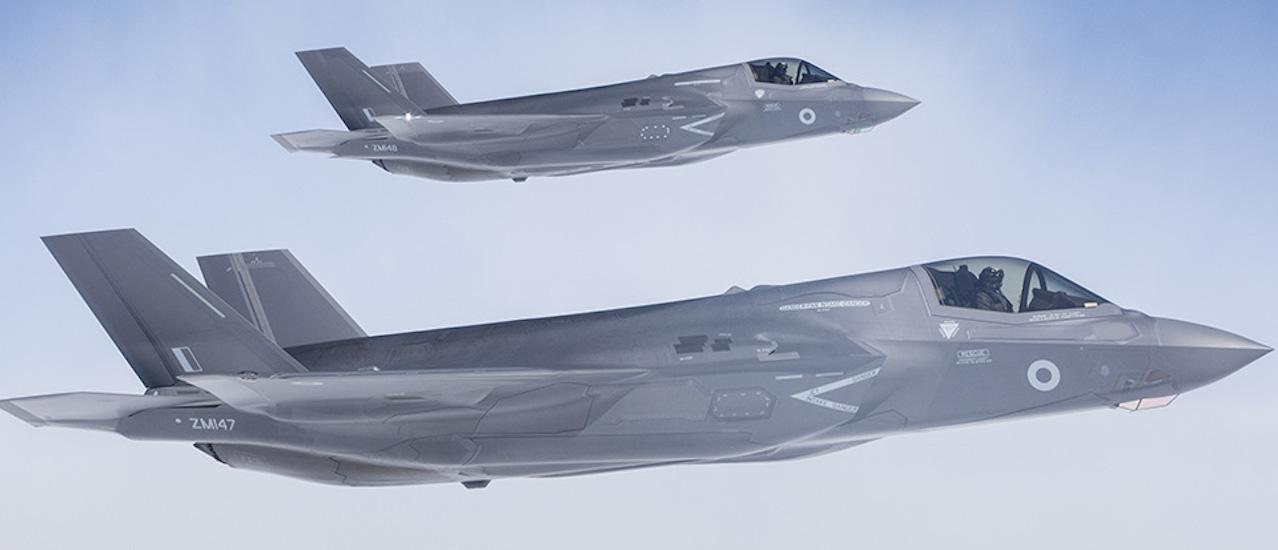
Image: Lockheed Martin
Columbia University & California Institute of Technology (CalTech) Faint Intergalactic medium Red-shifted Emission Balloon (FIREBall-2)
A cooperative effort between Columbia University, New York; California Institute of Technology, Pasadena; France's Laboratorie Astronomie Marseille and its space agency Centre National d'Etudes Spatiales (CNES). The experiment seeks to discover and map faint emission from the Inter Galactic Medium.
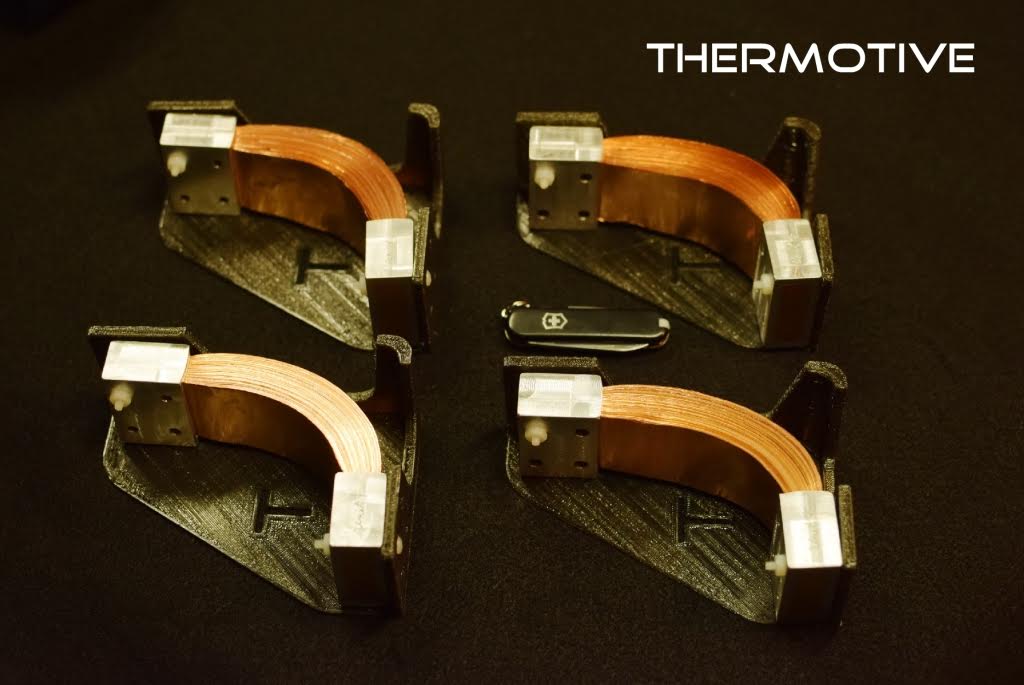 |
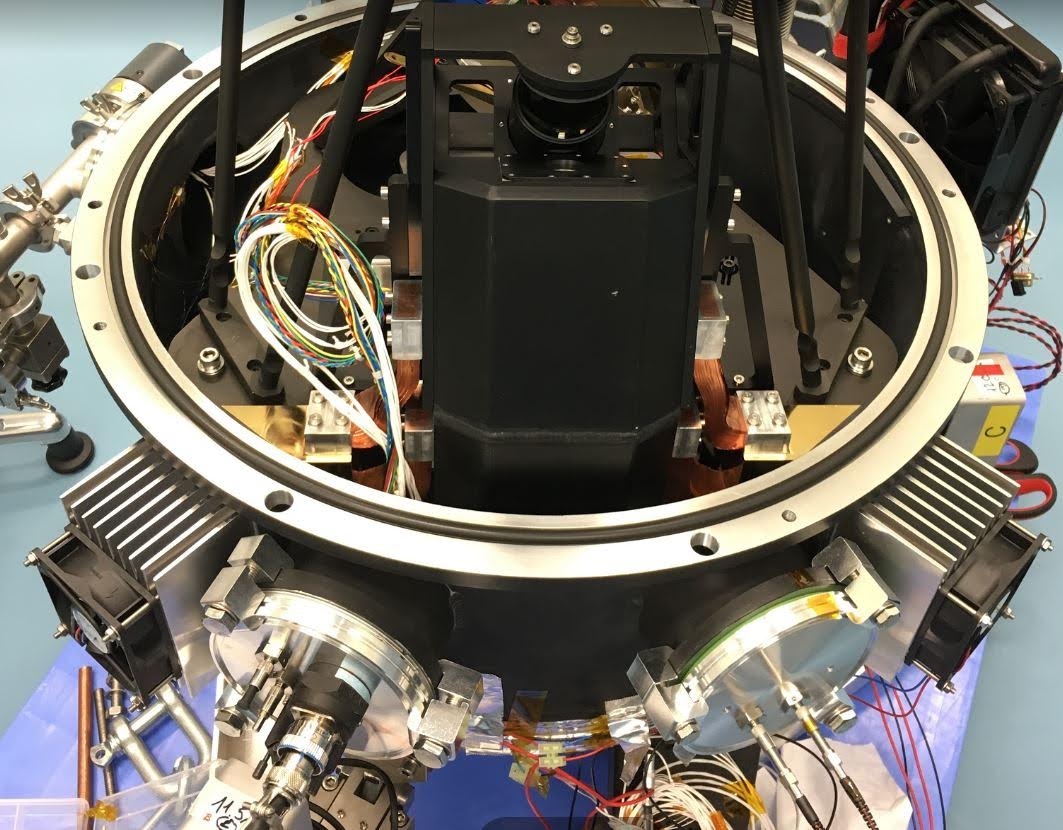 |
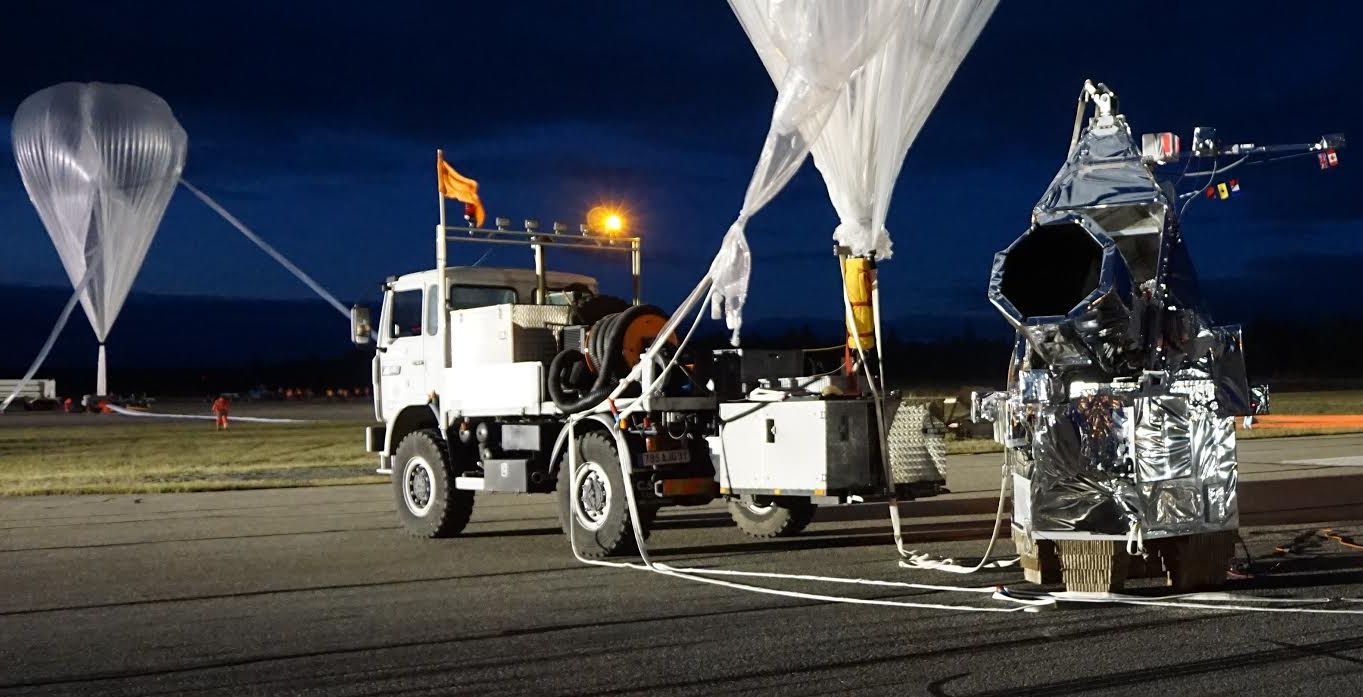 |
| Thermotive delivered copper and aluminum thermal straps for the FIREBall-2 instrument. | Thermotive hardware is visible on the instrument. | The Bit telescope is pictured. Credit: Univ. of Toronto |
THERMOTIVE ON THE GROUND
ARGUS on the Green Bank Telescope
Thermotive is pleased to announce that our hardware is integrated into the Green Bank Telescope’s Argus focal plane array for millimeter spectroscopy! Argus, a collaboration between Stanford U., Caltech, JPL, the Univ. Maryland, Univ. Miami, and the Green Bank Observatory, is now ready for shared-risk science observations on the Green Bank Telescope. It is a 16-pixel spectrometer whose front end is designed to be scalable, so that the array design can be configured for future instruments with hundreds of pixels. ARGUS is a collaboration between Caltech, Stanford University, JPL, University of Maryland and University of Miami.
For more information about ARGUS and the Green Bank Telescope, visit http://greenbankobservatory.org/argus.
COMAP - the CO Mapping Array Pathfinder - at the Owens Valley Radio Observatory
Thermotive delivered hardware to the University of Miami (Dr. Josh Gunderson). The high conductance copper thermal straps will eventually go on the Owens Valley Radio Observatory's CO Mapping Array Pathfinder (COMAP)! COMAP will use carbon monoxide (CO) lines to trace the distribution of star-forming galaxies in the Epoch of Reionization (EoR) and the Epoch of Galaxy Assembly. Phase I of COMAP comprises a 10.4-m telescope, located at the Owens Valley Radio Observatory (OVRO), equipped with a 19-pixel, dual polarization spectrometer array that will map a total of 10 square degrees of sky in the frequency range 26-34 GHz. In addition COMAP will study galactic anomalous microwave emission, a form of emission likely produced by spinning dust grains, which was first discovered two decades ago at OVRO. The project, whose design and fabrication is currently led by Caltech, is a collaboration between Caltech, Stanford University, JPL, University of Maryland and the University of Miami.
To learn more about COMAP and the OVRO, visit http://www.astro.caltech.edu/CRAL/projects.html.

